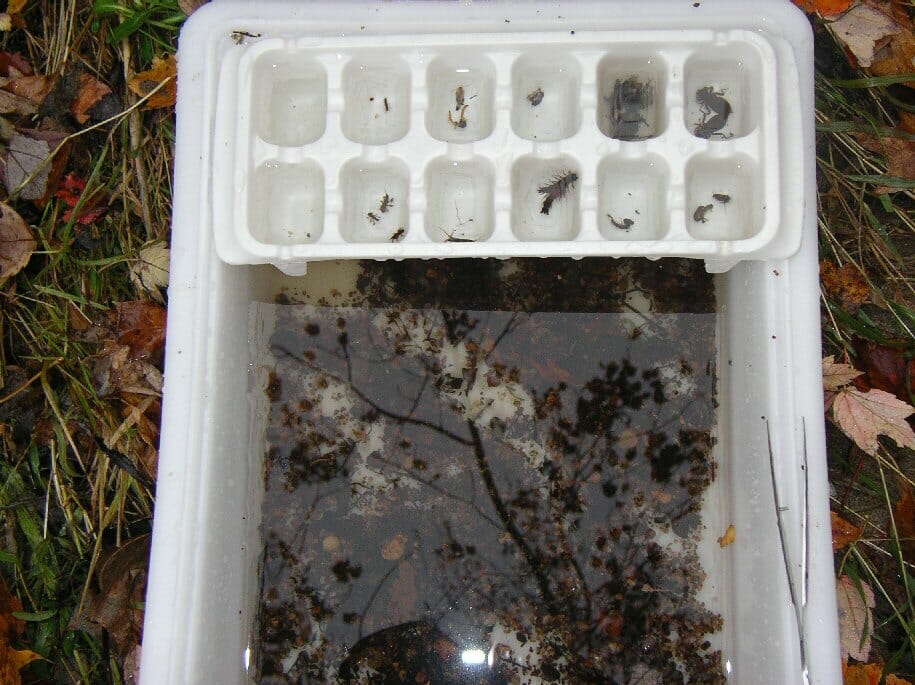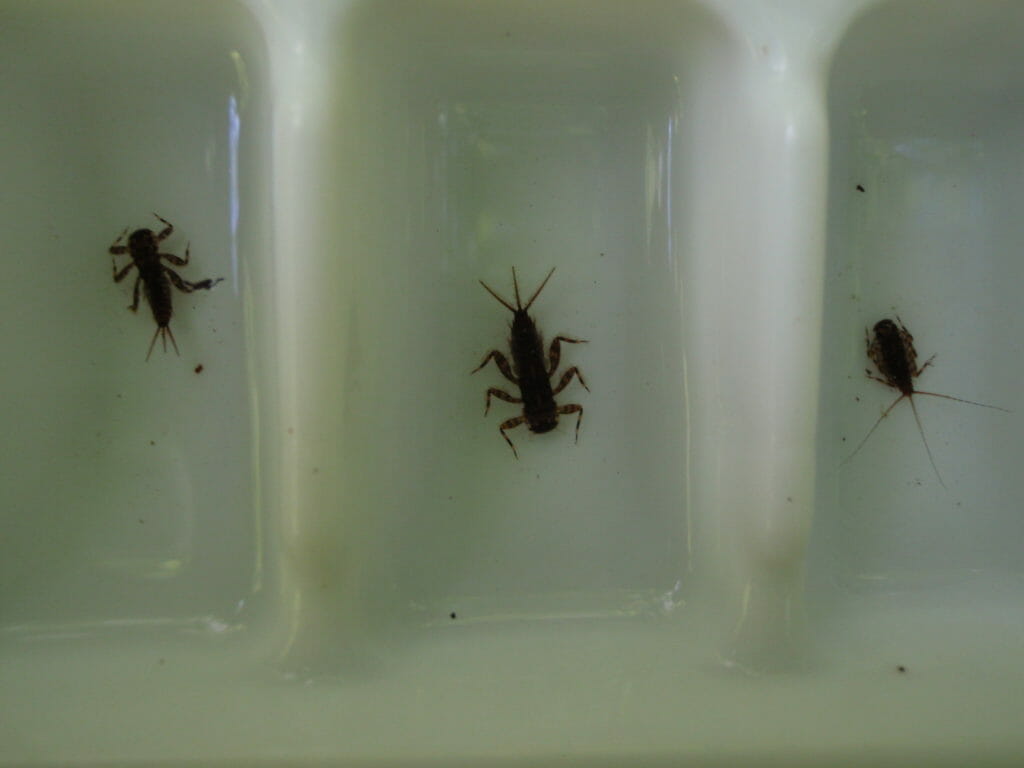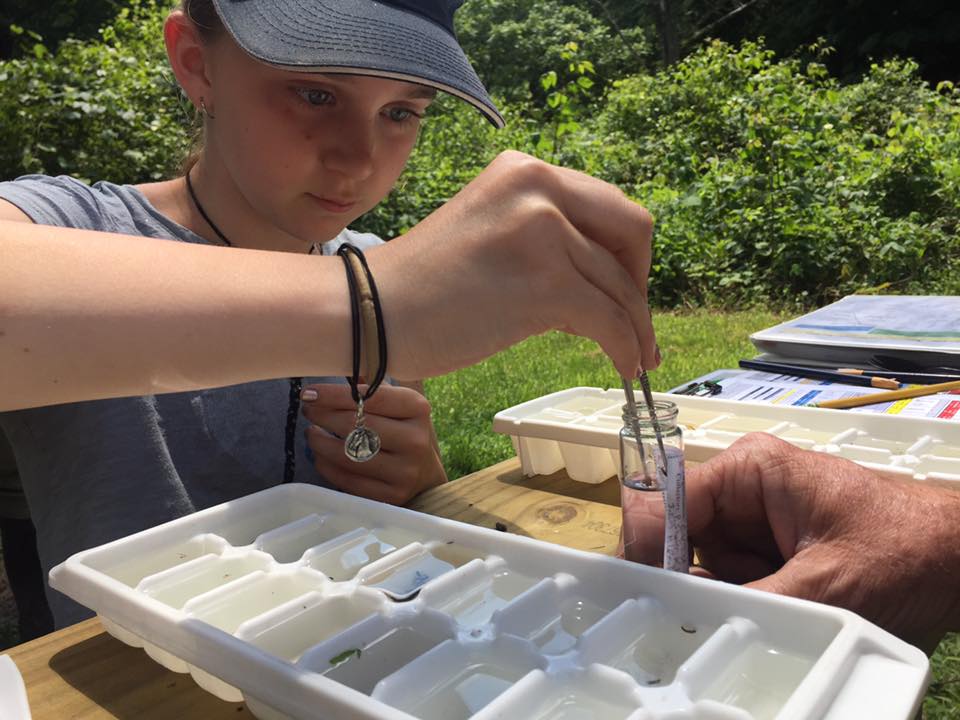Encourage your kids to splash around a river and get a little wet by doing a macroinvertebrate study.
Your kids will be amazed at all the tiny bugs living under the rocks, sticks and riffles in your local river.
All you’ll need for this great outdoors event are:
- Waders, boots or water shoes
- A window screen or butterfly net
- A small tarp or single-colored sheet or blanket
- A larger Tupperware container
- An ice cube tray
- Q-Tips or tweezers
- A magnifying glass
- A macroinvertebrate chart

Learn what trout eat, and how the presence of certain insects are indicators of cold, healthy streams.
Head to the stream with your kids and equipment in tow and find a nice stream side spot near a riffle or faster moving water (macroinvertebrates tend to favor highly oxygenated water).
- Position your screen or butterfly net downstream 1-to-2 feet, then have your kids kick the cobble bottom upstream or use their hands to turn over and “scrub” river rocks, letting the current carry the plume of debris (and bugs) downstream into the net or screen.
- Fill the Tupperware container and ice cube tray with fresh, clear water from the river.
- Return to the bank and lay the screen flat on a tarp, or turn the net inside out over the tarp.
- Use the Q-Tips or tweezers to capture all the critters and gently place them in the Tupperware container.
- Sort the bugs in the container by type, using the macroinvertebrate key, into the ice cube tray to see how many different types of insects you’ve found!

Ask your children questions throughout the activity:
- Based on what they read, where would be a good spot to search for aquatic insects? Why?
- What insects do they think they will find?
- What insects would indicate the coldest, cleanest water?
- How many different insect types did they find?
- What does the diversity of insect species they found tell them about the health of this river?
- Would trout have enough food to live here?
Pre-reading materials:
• Trout Food: Stream Explorers (Ages 5-13)
• An Angler’s Guide to Water Quality Monitoring (Ages 13-18)
• Section 6 on Macroinvertebrates
Editor’s Note: Youth across America continue to be impacted by Covid-19 and the way it has changed their school and personal lives. Trout Unlimited wants to help families make the most of more family time together by providing fun, educational and social distance friendly activities in the outdoors. We will be sharing a collection of activities as part of the TU Family Field Trip series.



